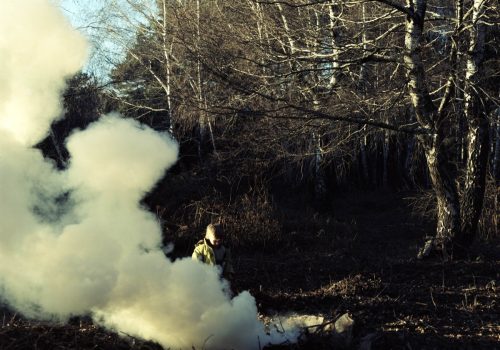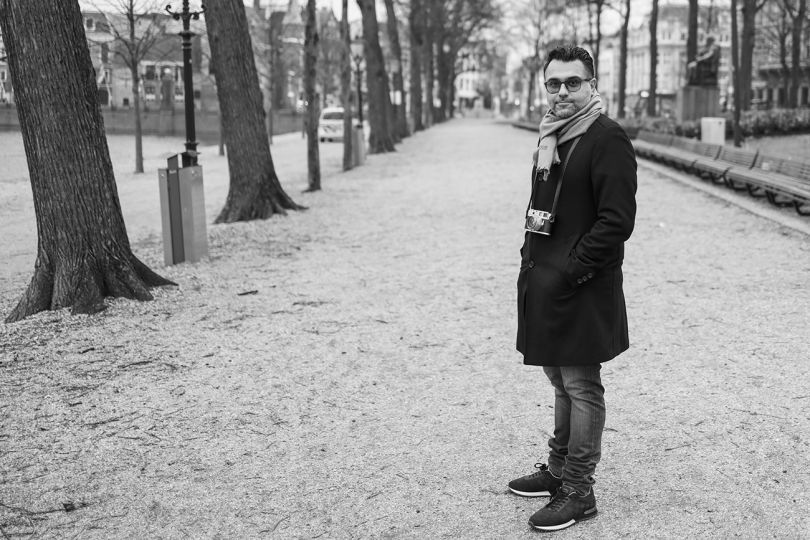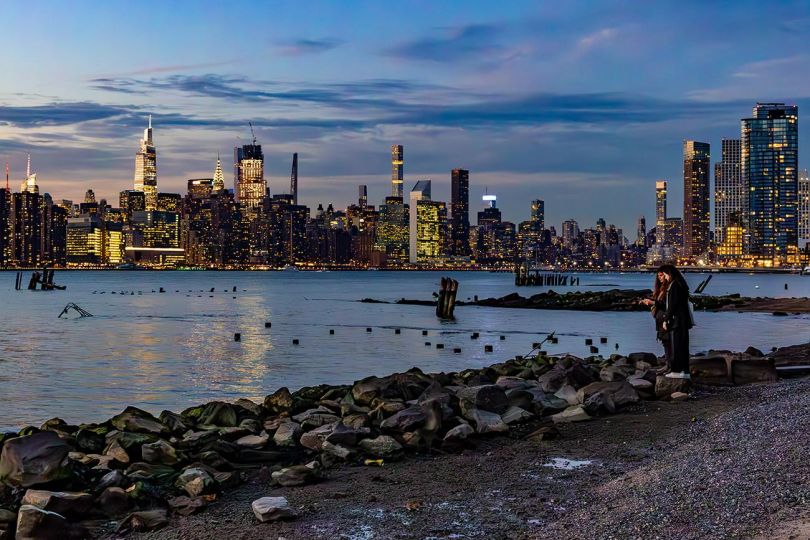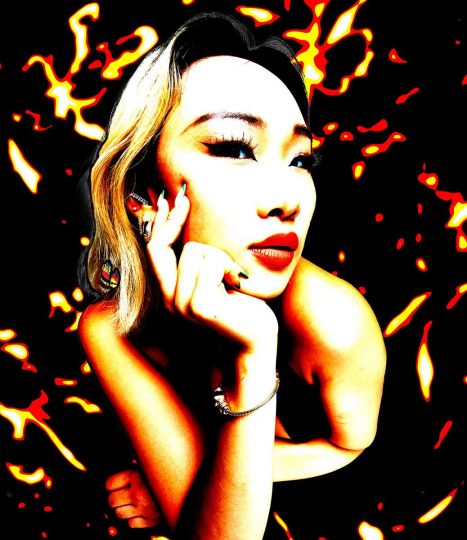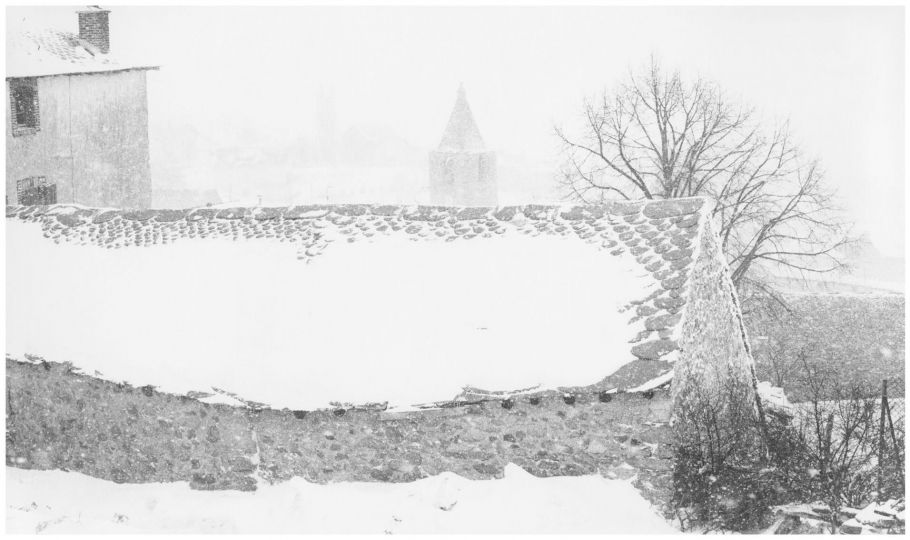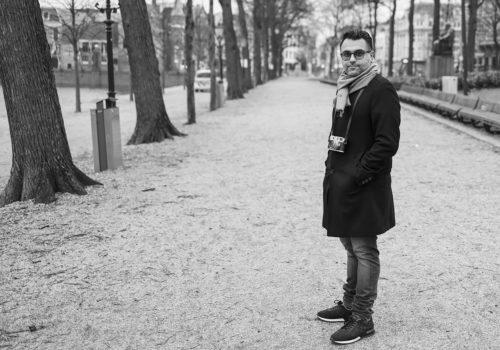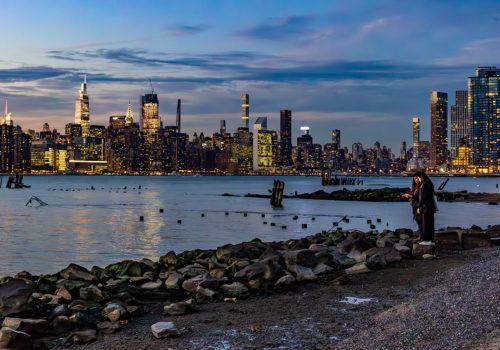From concrete buildings to graceful trees, the artist takes you on a walk through an imaginary country. A must-see exhibition at the Musée d’Art Moderne et Contemporain in Saint-Etienne.
Gazing skywards. The face turned towards the clouds. A young woman seems to be dreaming and, behind her, huge high-rise estates take shape on the horizon. All of the ambiguity of Valérie Jouve’s photographs are contained in this photograph. Nature celebrated in an urban environment or just the opposite: a mechanical world contained within an organic one.
The first photographs in the exhibition show it. The photographer was amazed by the remains of a rubber factory in the Amazon, not far from Belem in Brazil. She photographed impressive machines fallen into disuse and which had merged wonderfully well into the surrounding scenery. Here a house with a corrugated-iron roof close to a narrow track where great trees tower over it. There the carcass of a car stranded at the side of pot-holed road.
Alongside the artist slipped photographs of Firminy, the mining town not far from Saint-Étienne, the town where she was born in 1964.
Treasure
The world of factories that inundates her work quickly collides with another type of machine, the “machine for living in” as the artist herself says. Valérie Jouve has made a specialty of immortalising the high-rise estates, these enormous buildings on the edges of cities. The artist has found them both in Marseille in France and in Irbil in Iraq. Following her wishes the caption plates don’t mention where she took the photographs. “I think that allows the visitors to project themselves better, to take advantage of the appeal to their imagination”, she explains.
Hence also, this impression of crossing her own country, a territory sewn together with the thread of encounters with places and people. Since Valérie Jouve readily mixes them in skilfully-worked portraits. These characters who pose for her, mainly women, give an unseen impetus to the landscapes around them. Valérie Jouve captures their expressions marvellously, both relaxed and upset, happy and dreamy. These women are the portals into the landscapes that are shown next to them.
So these walls photographed in Paris respond to this woman turning her back on us and who herself looks at a high-rise building. We have the feeling of plunging into a corner of greenery in the middle of an overwhelming city and where, for a few moments, we find the treasure of refuge.
Sequoias
Although Valérie Jouve has been interested from the beginning in factories, machines and the people who live around the edges of cities, she has lately cultivated another garden: she has focussed on photographing trees. She has shot moving portraits of gigantic American sequoias. And, again, a great tree with multiple voluminous branches in the French countryside. And then, this film, which closes the exhibition. A leaf is attached by a slender natural thread to a tree branch while the wind stirs it and makes the leaf that resists it, tremble. “I made this video after an accident that happened to me in Brazil and it was like an outlet for me. The leaf represents the fragility of our lives that we sometimes have the tendency to forget”, confides the artist. A fragility that runs throughout her work and that this exhibition shows perfectly in a setting skilfully thought-out by Valérie Jouve
Jean-Baptiste Gauvin
Jean-Baptiste Gauvin is a journalist, author and director who lives and works in Paris.
Valérie Jouve, Formes de vies
From 19th May to 16th September 2018
Musée d’art moderne et contemporain de Saint-Étienne Métropole
Rue Fernand Léger
42270 Saint-Priest-en-Jarez
France
http://www.mam-st-etienne.com/

